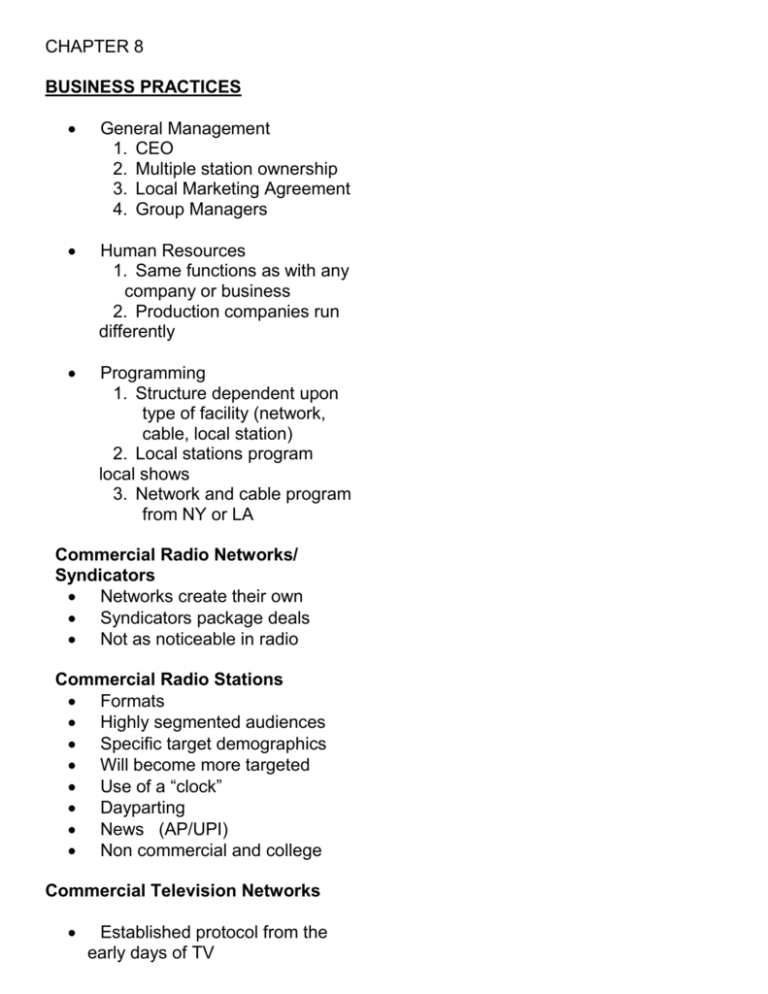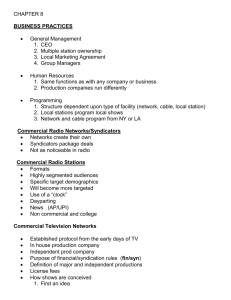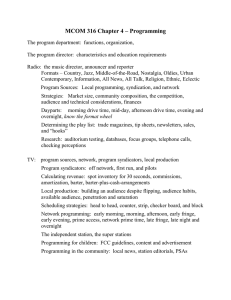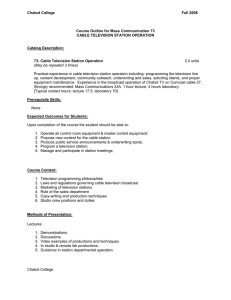to Chapter 8 Lecture Notes
advertisement

CHAPTER 8 BUSINESS PRACTICES General Management 1. CEO 2. Multiple station ownership 3. Local Marketing Agreement 4. Group Managers Human Resources 1. Same functions as with any company or business 2. Production companies run differently Programming 1. Structure dependent upon type of facility (network, cable, local station) 2. Local stations program local shows 3. Network and cable program from NY or LA Commercial Radio Networks/ Syndicators Networks create their own Syndicators package deals Not as noticeable in radio Commercial Radio Stations Formats Highly segmented audiences Specific target demographics Will become more targeted Use of a “clock” Dayparting News (AP/UPI) Non commercial and college Commercial Television Networks Established protocol from the early days of TV In house production company Independent prod company Purpose of financial/ syndication rules (fin/syn) Definition of major and independent productions License fees How shows are conceived 1. First an idea 2. Treatment 3. Pitch 4. Pilot 5. 2000 ideas = 200 scripts = 30 pilots = 6 to 8 hits “Seasons” 1. Originally 30-39 shows 2. Today 20-24 episodes Programming strategies 1. “block programming” 2. “hammocking” 3. “tentpoling” 4. “counterprogramming” 5. “bridging” Syndicators 1. Sell programs to anyone except the networks 2. Primary customers are local stations and local “O & O’s” 3. Types of syndicated shows a. “off-net” b. “first-run” Commercial Television Station 1. What are affiliates 2. Independents 3. Made for TV 4. “Stripping” 5. Payment for programs a. Cash b. Cash plus barter c. straight barter Public Television Networks 1. 2. 3. 4. PBS Non commercial Enhanced programming Enhanced underwriting Cable TV Networks 1. Exclusive rights 2. Made for cable 3. “narrowcasting” Other Departments Engineering Sales and Marketing Account Executives Research Traffic Public Relations Promotion and Publicity Promos (Internal/external)











